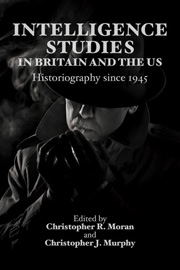Book contents
- Frontmatter
- Contents
- The Editors
- The Contributors
- List of Figures
- Preface
- Acknowledgements
- Introduction: Intelligence Studies Now and Then
- Part I AMERICAN INTELLIGENCE HISTORIOGRAPHY
- 1 CIA History as a Cold War Battleground: The Forgotten First Wave of Agency Narratives
- 2 The Culture of Funding Culture: The CIA and the Congress for Cultural Freedom
- 3 ‘Real Substance, Not Just Symbolism’? The CIA and the Representation of Covert Operations in the Foreign Relations of the United States Series
- 4 Bonum Ex Malo: The Value of Legacy of Ashes in Teaching CIA History
- 5 Narrating Covert Action: The CIA, Historiography and the Cold War
- 6 FBI Historiography: From Leader to Organisation
- 7 Reconceiving Realism: Intelligence Historians and the Fact/Fiction Dichotomy
- 8 The Reality is Stranger than Fiction: Anglo-American Intelligence Cooperation from World War II through the Cold War
- Part II BRITISH INTELLIGENCE HISTORIOGRAPHY
- Index
3 - ‘Real Substance, Not Just Symbolism’? The CIA and the Representation of Covert Operations in the Foreign Relations of the United States Series
from Part I - AMERICAN INTELLIGENCE HISTORIOGRAPHY
Published online by Cambridge University Press: 05 October 2013
- Frontmatter
- Contents
- The Editors
- The Contributors
- List of Figures
- Preface
- Acknowledgements
- Introduction: Intelligence Studies Now and Then
- Part I AMERICAN INTELLIGENCE HISTORIOGRAPHY
- 1 CIA History as a Cold War Battleground: The Forgotten First Wave of Agency Narratives
- 2 The Culture of Funding Culture: The CIA and the Congress for Cultural Freedom
- 3 ‘Real Substance, Not Just Symbolism’? The CIA and the Representation of Covert Operations in the Foreign Relations of the United States Series
- 4 Bonum Ex Malo: The Value of Legacy of Ashes in Teaching CIA History
- 5 Narrating Covert Action: The CIA, Historiography and the Cold War
- 6 FBI Historiography: From Leader to Organisation
- 7 Reconceiving Realism: Intelligence Historians and the Fact/Fiction Dichotomy
- 8 The Reality is Stranger than Fiction: Anglo-American Intelligence Cooperation from World War II through the Cold War
- Part II BRITISH INTELLIGENCE HISTORIOGRAPHY
- Index
Summary
In March 1967, the Harvard economist and former US Ambassador to India, John Kenneth Galbraith, noted wryly in the pages of The Washington Post that recent events had confirmed the Central Intelligence Agency (CIA) to be ‘a secret agency … with an excellent instinct for headlines’. A month earlier, to the horror of senior CIA officials, the American west coast magazine Ramparts had disclosed the Agency's long-standing financial connection to a number of international educational and cultural organisations. In a series of damning exposes covered simultaneously in The New York Times, details of covert CIA operations conducted in the United States, Europe and Asia were laid bare. Ever since the blanket press exposure given to CIA indiscretions in the wake of the Ramparts revelations, and the international media circus that developed in the early 1970s around Congressional probes into the American intelligence community, the CIA has fought to keep much of its remaining operational and institutional history secret. Nonetheless, the Agency's association with the surveillance of political groups inside the United States during the Johnson and Nixon administrations (Operation CHAOS), links to the global narcotics trade and, following the events of 11 September 2001, controversial role in prosecuting the United States' ‘War on Terror’ have served as particularly toxic forms of public diplomacy. Until relatively recently, the Agency's most prominent adversaries in the battle for control of CIA history have been former intelligence officers turned memoirists, journalists and historians.
- Type
- Chapter
- Information
- Intelligence Studies in Britain and the USHistoriography since 1945, pp. 65 - 89Publisher: Edinburgh University PressPrint publication year: 2013

